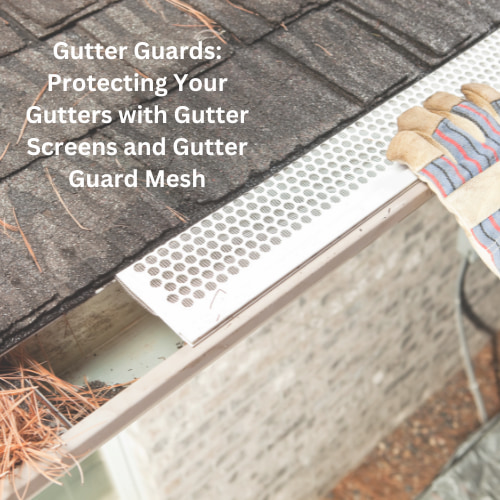Features of Installation of a Gutter Drainage System
Are you looking for gutter drainage system information? We will cover some basics as as well as answer some common questions in this post.
This post may contain affiliate links, I earn from qualifying purchases at no extra cost to you. Click here for my disclosure policy
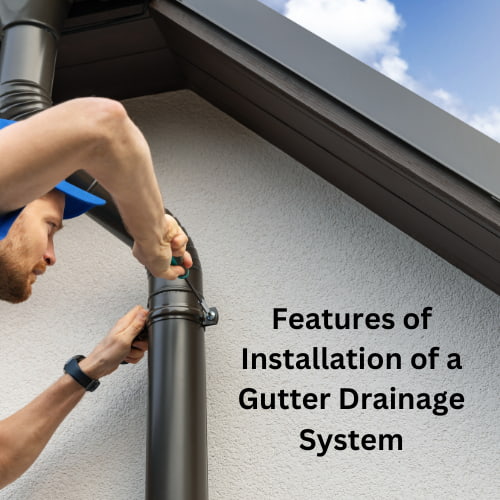
Are you looking for gutter drainage system information? We will cover some basics as as well as answer some common questions in this post.
Why gutters are important?
Gutters are important for several reasons. Firstly, they help to protect the structural integrity of a building by directing rainwater away from the roof, walls, and foundation. This prevents water damage, such as leaks, rot, and mold growth. Secondly, gutters help to prevent erosion around the foundation of a building by channeling water away from the immediate vicinity. This is crucial for maintaining the stability of the foundation. Additionally, gutters help to keep the exterior of the building clean by diverting water away from the walls and windows, preventing staining and dirt buildup. Overall, gutters play a vital role in preserving the longevity and condition of a building.
The installation of a drainage system is a critical stage of work that determines the durability of the roof, walls, facade, and foundation of the building. For this reason, the design and installation of gutters are approached with caution, and installation is best left to gutter installers in your area.
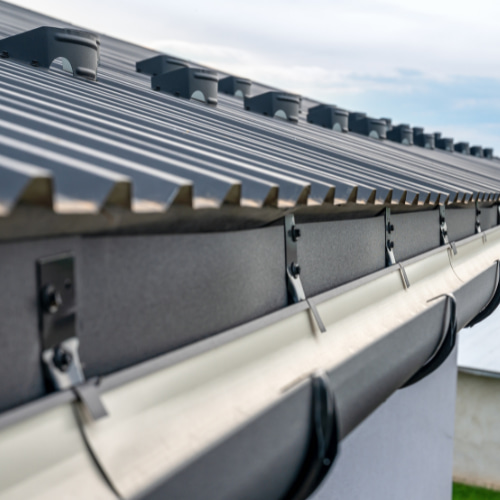
Gutter Drainage System Overview
The technology of work will be identical regardless of whether a block house or brick is used in the construction of the house. The better the drainage is made, the longer the roof of the house will remain airtight. Marking and installing drainage system hooks is the most critical stage in arranging a drainage system since it determines its quality. First, craftsmen measure the perimeter of the roof to determine the length of the drainage gutters.
Then determine the places where the drainage funnels will be located. A distance of at least 1 cm must be provided between the hole of the funnel and the dropper. The funnel itself must be lower than the dropper. After this, they begin to fix the hooks. The shortest and longest hooks are installed first. A string is pulled between them to mark the bottom of the gutter. The hooks are installed on the bottom of the sheathing or on the bottom of the roof rafters using self-tapping screws. The distance between them is 30 and 60 cm for copper and plastic gutters, respectively.
In the second stage of the work, the craftsmen install drains and gutters and install a drainage funnel. A semicircle is cut out of the funnel so that the gutter can easily fit into it. The place where the funnel will be located is marked on the gutter. Before fixing the gutter with hooks, it is necessary to attach a drain funnel to it.
To achieve long-lasting gutters, gutter connectors must be installed carefully. The sealing strip is placed into the connector with the ribbed side up. The connector should be attached to the end of the gutter so that it is located in the middle of the joints of the two gutters. In this case, the gutters should not touch.
The outer and inner corners of the gutters are attached to the gutter systems using connectors. Each corner is secured with two hooks. Additional hooks are located on the edges of the gutters near the connectors. After this, it is necessary to determine the length of the drainpipes and attach special pipe holders to the facade of the house. One holder is located at the top and the other at the bottom of the building. The blind area is located at a distance of 30 cm from the drain elbow. If it is necessary to connect several parts of a pipe together, connecting pipes are used.
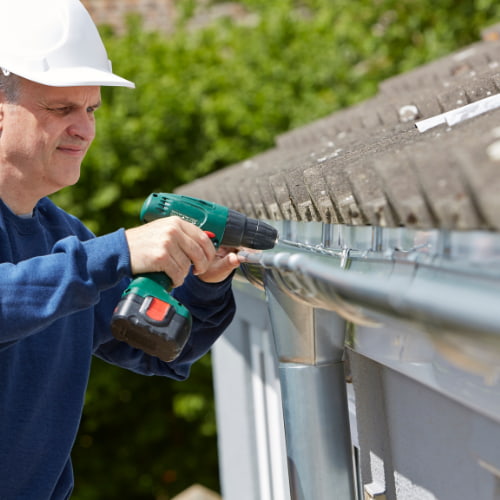
Gutter Drainage System Installation Guide
The installation of a drainage system involves several key stages, which are crucial for its overall effectiveness:
1. Marking and Installing Hooks
The first step is marking and installing hooks, which is a critical stage that significantly impacts the quality of the drainage system. Here’s what you need to do:
- Measure the perimeter of the roof to determine the length of the drainage gutters.
- Identify the locations for the drainage funnels, ensuring a minimum of 1 cm distance between the funnel hole and the downpipe.
- Position the funnel so that it is lower than the downpipe.
- Begin fixing the hooks, starting with the shortest and longest hooks. Use self-tapping screws to secure them to the bottom of the sheathing or the roof rafters.
- Maintain a distance of 30 cm for copper gutters and 60 cm for plastic gutters between the hooks.
2. Installing Drains and Gutters
In the second stage, you’ll install drains and gutters and attach a drainage funnel. Follow these steps:
- Cut a semicircle out of the funnel to ensure a snug fit for the gutter.
- Mark the location of the funnel on the gutter.
- Attach the drain funnel to the gutter before securing the gutter with hooks.
3. Gutter Connectors
Proper installation of gutter connectors is essential for the longevity of your gutters. Here’s how to do it:
- Place a sealing strip into the connector with the ribbed side facing up.
- Attach the connector to the end of the gutter, ensuring it’s positioned in the middle of the joints of the two gutters. Avoid letting the gutters touch each other.
4. Outer and Inner Corners
Use connectors to attach the outer and inner corners of the gutters to the gutter system. Each corner should be secured with two hooks, and additional hooks should be placed near the connectors to ensure stability.
5. Drainpipes
To complete the installation, follow these steps for the drainpipes:
- Determine the length of the drainpipes and attach special pipe holders to the facade of the house, with one holder at the top and one at the bottom of the building.
- Position the blind area approximately 30 cm from the drain elbow.
- When connecting multiple sections of the pipe, use connecting pipes for a secure fit.
By following these installation steps diligently, you’ll ensure the long-lasting performance of your gutter drainage system. Remember that the quality of the installation directly impacts the airtightness and durability of your roof.

Gutter Drainage System: Protecting Your Home’s Foundation
When it comes to safeguarding your home against the damaging effects of water runoff, a robust gutter drainage system is a crucial component. Gutter drainage problems, if left unaddressed, can lead to a host of issues, from foundation cracks to basement flooding. However, with some basic knowledge and a bit of DIY spirit, you can tackle these issues and implement effective gutter drainage solutions.
The Role of Leaves and Storms
Leaves often accumulate in your gutter system, causing an overflow of water during heavy rainstorms. This overflow can result in water pouring down directly near your home’s foundation, which may lead to severe problems such as foundation cracks and basement flooding.
Addressing Gutter Cleaning and Downspouts
Regular gutter cleaning is a vital part of maintaining a functional gutter drainage system. Clearing out leaves and debris prevents clogs and ensures the free flow of water. Pay special attention to your gutter downspouts, which direct water away from your home. Installing downspout extensions can help steer water further from your home and protect your basement.
DIY Solutions and Underground Drainage
For those with a penchant for DIY, there are practical ways to mitigate gutter drainage problems. Implementing underground gutter drain systems can effectively divert water away from your home. You can do this by digging trenches and laying PVC pipes or gutter drainage systems featuring catch basins.
French Drains and Catch Basins
French drains, consisting of a trench filled with gravel and a perforated pipe, can efficiently handle water runoff. In your landscaping efforts, consider incorporating catch basins in your lawn or patio to collect excess water and prevent soil erosion.
Professional Assistance and Stainless Steel Solutions
In cases where DIY approaches may not be sufficient, it’s advisable to consult with contractors specializing in gutter drainage solutions. They can install underground drain systems, including stainless steel or aluminum pipes, which are durable and effective in managing water runoff. These professionals can also help design a gutter drainage system that complements your landscaping and walkway.
Protecting Your Basement and Foundation
A well-designed gutter drainage system is your first line of defense against floods, mildew, and costly damage to your home’s foundation. By addressing gutter drainage problems and ensuring that water is efficiently managed, you can enjoy a dry basement and a structurally sound home.
Remember, taking action to address gutter drainage issues not only protects your home but also enhances its curb appeal and overall value.
Shop any of these stores and I receive a small commission at no cost to you.
 A-M Gutter Guard - Aluminum...Shop on Amazon
A-M Gutter Guard - Aluminum...Shop on Amazon plusgutter White-2pack Rain...Shop on Amazon
plusgutter White-2pack Rain...Shop on Amazon ZNNCO Upgraded Gutter Downs...Shop on Amazon
ZNNCO Upgraded Gutter Downs...Shop on Amazon Oatey Mystic Rainwater Coll...Shop on Amazon
Oatey Mystic Rainwater Coll...Shop on Amazon
Gutter Drainage System Q & A
A downspout is an essential component of a gutter drainage system. It is a vertical pipe that runs down the side of a building and is connected to the gutters. Its purpose is to redirect the water collected by the gutters away from the foundation of the building, preventing water damage and erosion.
While the terms “gutter drain” and “downspout” are often used interchangeably, there is a subtle difference between the two. A gutter drain refers to the entire system of gutters, downspouts, and associated components that collect and redirect rainwater. On the other hand, a downspout specifically refers to the vertical pipe that carries the water from the gutters down to the ground or a drainage system. So, a downspout is just one part of the overall gutter drain system.
Gutters should ideally drain away from the foundation of the building and towards an appropriate drainage system or location. This can include downspouts that direct the water into underground drainage pipes, rain barrels, or a designated drainage area away from the building. It is important to ensure that the water from the gutters does not collect near the foundation, as it can lead to water damage and erosion.
Gutters should be cleaned regularly to prevent clogs and ensure proper water flow. The frequency of cleaning depends on various factors such as the surrounding environment and the presence of trees or debris that can accumulate in the gutters. As a general guideline, it is recommended to clean gutters at least twice a year, typically in the spring and fall. However, it may be necessary to clean them more frequently if there is excessive buildup or if you notice water overflowing during rainfall. Regular maintenance and inspection can help avoid costly repairs and maintain the effectiveness of the gutter drainage system.
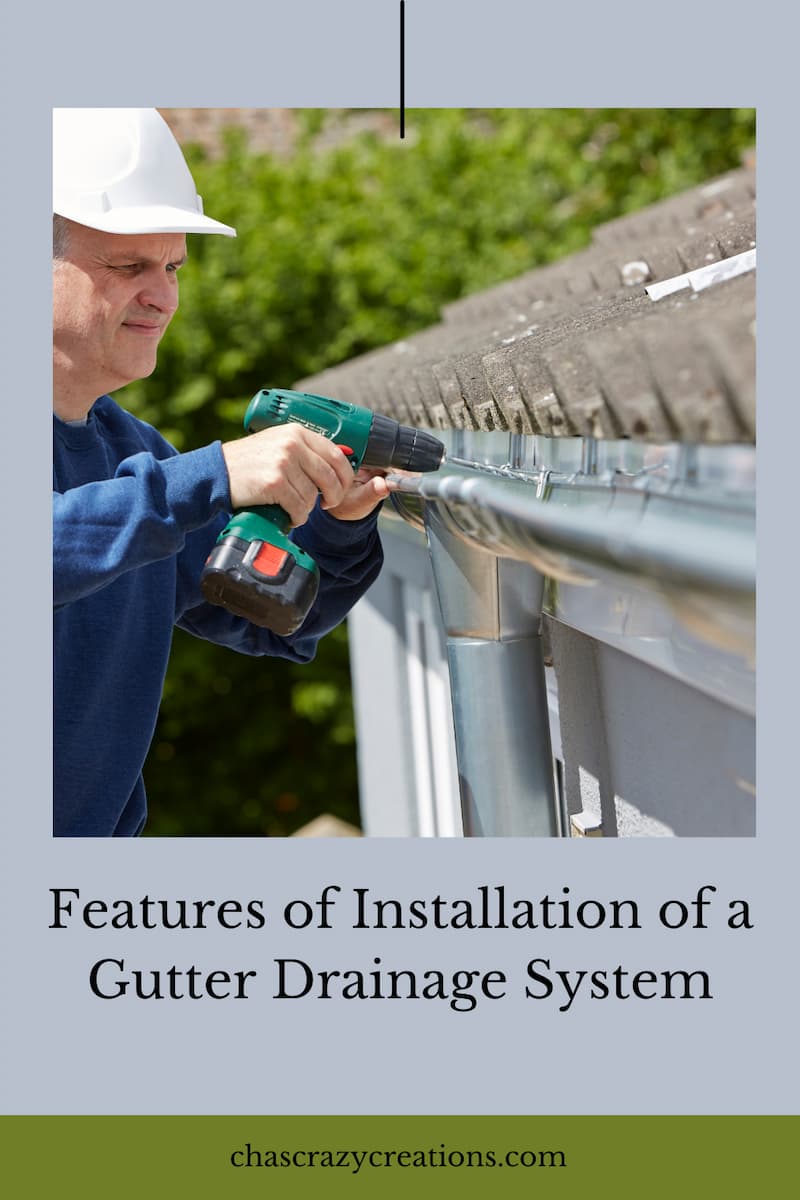
More Gutter Drainage System Info
Types of gutter materials
When it comes to choosing the right gutter materials for your drainage system, there are several options available. Here are some common types of gutter materials to consider:
1. Aluminum: Aluminum gutters are lightweight, durable, and resistant to rust and corrosion. They are a popular choice due to their affordability and low maintenance requirements. Aluminum gutters also come in a wide range of colors, making it easy to match them with your home’s exterior.
2. Vinyl: Vinyl gutters are lightweight, easy to install, and cost-effective. They are resistant to rust and denting, but they may become brittle over time, particularly in extreme weather conditions. Vinyl gutters are available in different colors and styles, providing versatility in design.
3. Copper: Copper gutters offer a classic and elegant look to any home. They are highly durable, resistant to corrosion, and have a long lifespan. Over time, copper develops a natural patina that adds to its aesthetic appeal. However, copper gutters tend to be more expensive and require professional installation.
4. Steel: Steel gutters are known for their strength and durability. They can withstand heavy snow loads and are less prone to denting or damage. However, steel gutters are susceptible to rust, so they require regular maintenance and protective coatings to prevent corrosion.
5. Zinc: Zinc gutters are similar to copper in terms of their aesthetics and durability. They develop a natural patina over time and have excellent resistance against corrosion. While zinc gutters are initially more expensive, they require minimal maintenance and have a long lifespan.
Each gutter material has its own strengths and considerations, so it’s important to assess your specific needs, budget, and local climate before making a decision. Consulting with a professional installer can provide further guidance in selecting the most suitable material for your gutter drainage system.
Maintenance tips
To ensure the proper functioning and longevity of your gutter drainage system, regular maintenance is essential. Here are some maintenance tips to keep in mind:
1. Regular gutter cleaning: Clear out leaves, debris, and other obstructions from your gutters to prevent clogs and ensure proper water flow. Clean your gutters at least twice a year, typically in the spring and fall. However, if you have trees nearby or notice excessive buildup, more frequent cleaning may be necessary.
2. Inspect for damages: Regularly inspect your gutters for any signs of damage, such as cracks, sagging, or loose fittings. Repair or replace damaged sections promptly to prevent further issues.
3. Check downspouts: Ensure that your downspouts are clear of debris and properly attached to the gutters. Clear any clogs or blockages in the downspouts to prevent water overflow. Consider installing downspout extensions to direct water further away from your home’s foundation.
4. Maintain proper drainage: Check that water from your gutters is effectively draining away from your home’s foundation. Ensure that the downspouts direct water towards an appropriate drainage system or location, such as underground drainpipes or designated drainage areas.
5. Install gutter guards: Consider installing gutter guards to prevent leaves, twigs, and other debris from entering your gutters. This can help reduce the frequency of gutter cleaning and minimize the risk of clogs.
6. Monitor during heavy rainstorms: Keep an eye on your gutter drainage system during heavy rainstorms. Ensure that water is flowing freely and not overflowing from the gutters. If issues arise, take immediate action to address them to prevent damage to your home.
Remember, proper maintenance is key to keeping your gutter drainage system functioning effectively. By following these tips, you can avoid costly repairs, protect your home’s foundation, and ensure the longevity of your gutter system.
Cost considerations
When considering the cost of installing a gutter drainage system, there are a few factors to keep in mind:
1. Material costs: The cost of gutter materials can vary depending on the type of gutter material chosen, such as aluminum, vinyl, copper, steel, or zinc. Each material has its own price range, with some being more affordable than others. Aluminum and vinyl gutters tend to be more budget-friendly options, while copper and zinc gutters can be more expensive.
2. Labor expenses: Hiring professional gutter installers will add to the overall cost. The cost of labor can vary based on factors like the complexity of the installation, the size of the gutter
Local regulations and permits
When it comes to installing a gutter drainage system, it’s important to consider local regulations and obtain any necessary permits. These regulations and permits vary depending on your location and the specific requirements in your area. It’s recommended to consult with local authorities or a professional gutter installer to ensure compliance with these regulations. Failing to adhere to local regulations and obtain permits can result in fines or other legal consequences. So, be sure to do your due diligence and follow the proper procedures when installing a gutter drainage system.
Benefits of professional installation
There are several benefits to opting for professional installation of your gutter drainage system. Here are a few key advantages:
1. Expertise and Experience: Professional gutter installers have the knowledge and experience to properly design and install a gutter drainage system that meets your specific needs. They understand the nuances of the installation process and can ensure that all components are correctly positioned and securely attached.
2. Time and Efficiency: Hiring professionals saves you time and effort. They have the necessary tools and equipment to complete the installation efficiently, allowing you to focus on other tasks. Additionally, professionals can work quickly without compromising the quality of the installation.
3. High-Quality Workmanship: Professional installation ensures that your gutter drainage system is built to last. Professionals use industry-standard techniques and quality materials, resulting in a durable and effective system. Their attention to detail minimizes the risk of leaks, clogs, and other issues that could arise from improper installation.
4. Warranty and Insurance: Reputable gutter installers often provide warranties on their workmanship and the materials used. This gives you peace of mind knowing that they will address any issues that may arise after installation. Additionally, professional installers typically carry insurance, protecting you from liability in case of accidents or damages during the installation process.
5. Customization and Design: Gutter professionals can assess your specific requirements and design a system that best fits your property. They consider factors such as roof slope, water volume, and landscape features to create a customized solution. This ensures optimal water management and minimizes the risk of water damage to your property.
Ultimately, investing in professional installation of your gutter drainage system guarantees a high-quality, efficient, and durable solution that protects your home from water damage and extends the longevity of your gutter system.
